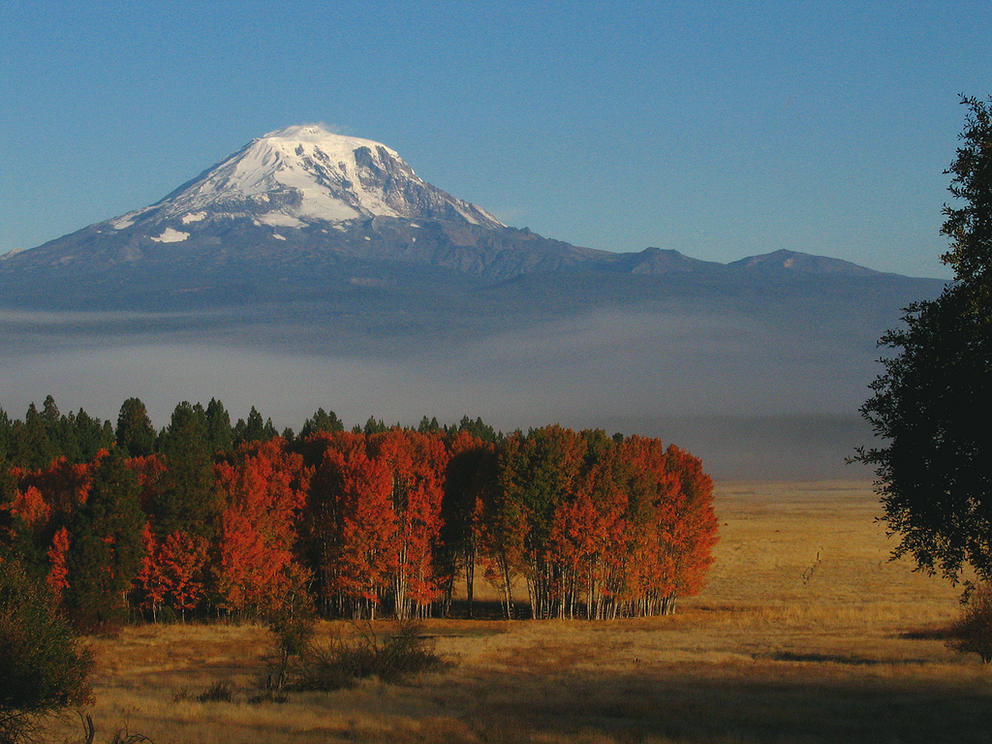The “Sagebrush Rebellion” militants who seized control of the Malheur National Wildlife Refuge in January repeatedly called for the “return” of federal lands to the states.
As extreme as their action was, the concept of “returning” national land to state control has also turned up in the news elsewhere. Republican presidential candidate Ted Cruz aired a 30-second ad ahead of the recent Nevada Republican caucuses promising to “return full control of Nevada’s lands to its rightful owners, its citizens.” The Utah legislature is considering a bill setting up a planning and management process for the 31 million acres of federal land that the bill’s sponsor hopes will someday be handed over to that state.
A Salt Lake Tribune editorial recently said the legislation “might as well be titled the Utah Public Lands Fairies and Unicorns Act for all the chances it has of actually setting the rules for any territory,” adding, “No court will ever order it. No Congress will ever approve it. No president will ever stand for it.”
It’s important to understand one reason it’s unlikely the 353 million acres of national lands in the West will ever be “returned” to the states: Those states never owned the land in the first place.
Most of the Western states agreed as a condition of statehood that they would “forever disclaim all right and title” to Indian lands and undistributed federal land. Congress repeatedly insisted on that condition — and for good reason.
As settlers moved across the Appalachians in the late 18th century, the original 13 colonies laid competing claims to what was then a rather expansive definition of “the West.” A key compromise in putting a new nation together was that the states would give up their claims and the federal government would manage the distribution of land to new states and individuals. The federal government’s Northwest Ordinances of the 1780s opened Ohio, Indiana, Michigan, Illinois and Wisconsin for settlement. But there were repeated instances of rigged sales of state lands to well-connected speculators who made a killing on resales.
Among other things, those laws provided that as federally-controlled land was distributed, one section in every township would be set aside for education. But as the territories were settled, public lands for education were often sold for far less than market value.
Because of the scandals, when the Far West was settled later in the 19th century, Congress insisted on progressively stronger controls over the disposition of land reserved for public purposes — particularly for schools. Oregon’s 1859 Statehood Enabling Act provided that the new State of Oregon could not interfere with the federal government’s distribution of land for homesteading or tax property retained by the national government.
Nevada’s 1864 Enabling Act required that new state to agree to “forever disclaim all right and title to the unappropriated public lands … and that the same shall be and remain the sole and entire disposition of the United States.” The “forever disclaim” phrase, covering both federal property and Indian lands, turned up in the enabling acts and the constitutions for Washington, Idaho, Montana, North Dakota, South Dakota, Utah, Arizona and New Mexico.
The federal government actively encouraged homesteading in the Far West, and most of the good land was quickly settled by farmers who became landowners. More than half is today in private hands. But the forests, mountains, deserts and scrubland less appropriate for agriculture were maintained and managed in the federal domain — much of it made available to the private sector for grazing, logging and mining.
Those lands remained in the ownership of the nation as a whole. They were never owned by the states, so one cannot properly speak in terms of “returning” the properties to state government.
Yet that hasn’t stopped state officials and would-be landowners from demanding that our federal land legacy be broken up, given to the states or sold to the private sector. As early as 1828 the governor of Illinois argued that for his state to be on an equal footing with the first 13, all national property in his state should be handed over to him for management and disposition. Utah’s governor made the same argument in 1932.
In 1979 Nevada passed a law asserting state title to almost all federal land within its boundaries, and Nevada also sued the United States government claiming a constitutional right to those properties. A federal court quickly dismissed the action, ruling that the Constitution gave Congress power over public land without limitation, and that the earlier federal-state compacts on federal land were enforceable. But that didn’t keep similar legislation from passing in a half-dozen other western states.
As a policy matter, Congress could decide to sell off our national lands or transfer them to state governments for state management or disposal for private use and development. But the sagebrush folks should understand that state sales of public land don’t necessarily mean sales to them — they might get outbid. And if the states were to manage these public properties, the states could quickly become the bogeypersons that the federal land management agencies now represent to the self-styled rebels.
Thirty-five years ago the Western states legal historian John Leshy said that he thought the Sagebrush Rebellion “will ultimately be viewed as representing not the beginning of a second American Revolution, but instead a last gasp of a passing era, a poignant effort to turn back the clock to the days when competition among uses of federal lands was rare, when resources seemed inexhaustible, and when a consensus existed for exploitation.” He definitely got that right.


